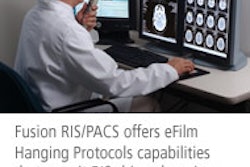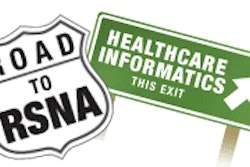CHICAGO - There may soon be just two types of radiology groups in the U.S. -- those that subscribe to teleradiology services, and those that provide them. But either path may be a winner, according to presenters at the RSNA.
Dr. Joe Lacy of the University of Texas Medical Branch (UTMB) in Galveston detailed several benefits of being a teleradiology provider in a presentation Tuesday. His radiology department is now generating 10% of its revenue by providing interpretations for imaging centers elsewhere in Texas, he said.
And in a plenary session on Wednesday, the strategic considerations in global teleradiology were addressed by Dr. William G. Bradley, University of California, San Diego radiology chairman and director of academic affairs for Nighthawk Radiology Services, and Dr. Sanjay Saini, who guided the aborted global teleradiology effort at Massachusetts General Hospital in Boston, and is now chairman of radiology at the Emory University School of Medicine in Atlanta.
Although MGH's project was cited repeatedly in the mainstream media as an example of how high-end American jobs might be lost to workers in India, that was never really the case in radiology, Saini said.
"The option of a non-U.S. radiologist really does not exist," Saini said, citing the licensure, credentialing, and other requirements that limit the practice of radiology provided for American patients.
And the notion that offshoring inevitably leads to lower wages is also a misconception, Saini said. "If you're a portable employee, you demand the higher wages," he noted.
But developing a network of foreign radiologists who could meet those requirements -- as MGH attempted to do -- might be desirable in order to meet the increasing demands for imaging interpretation in the future, Saini said.
Demand for imaging interpretation is increasing steadily, while the number of U.S. radiology residency slots has remained the same for years and is unlikely to increase, he noted. In the meantime, the U.S. has become increasingly dependent on graduates of foreign medical schools.
If U.S. radiologists are truly concerned that their skills may someday be in oversupply, they might prefer the development of foreign-based locum tenens than the expansion of the U.S. workforce, he suggested.
"By looking at an international solution we can titrate" the supply of radiology services, he said.
For U.S. radiologists who might be interested in living abroad for a few years, Bradley gave an overview of Nighthawk Radiology Services that included pictures of its offices overlooking the Sydney, Australia, harbor and Opera House.
Radiologists who want to work for Nighthawk in Sydney must sign up for three-year tours of duty to offset the costs involved in licensing them in 48 U.S. states, Bradley said. They work about half time, albeit in shifts of up to 12 hours, and make salaries of $300,000 or more per year.
The benefits for Nighthawk customers include nighttime coverage that might otherwise be costlier, given the shortage of radiologists willing to work nights in the U.S.
And a radiology group with a "nighthawk" service will have an advantage in recruiting new members when they know they won't have to work nights, Bradley said.
From a broader perspective, such services also meet the demand for contemporaneous readings for overnight emergency patients while maintaining "radiology by radiologists," Bradley said.
All of Nighthawk's interpretations are "wet reads," Bradley said, mainly because Medicare rules prohibit the billing of any overseas services for U.S. patients. Therefore, the system also involves inherent double reading by local radiologists who do the subsequent final reports, he said.
In his presentation on the UTMB experience, Lacey noted that his institution had substantial experience in providing teleradiology services for cruise ships, for the Texas state prison system, and for scientists working in Antarctica.
But UTMB also primarily serves an indigent population, and was facing state budget cuts when the radiology department got an opportunity to provide MR interpretations for imaging centers located elsewhere in Texas.
The department is now receiving three times as many musculoskeletal MR images from its commercial partners than it generates at its own center, Lacy noted. That has enabled the department to begin a separate musculoskeletal rotation that has been well received by UTMB residents.
"The quality of the images is a little less, but it prepares us for oral boards," said Lacy, himself a third-year resident. "I'm not going to feel uncomfortable when I see something a little fuzzy on oral boards (because) I've seen that before; I read it every day on our rotation."
Because UTMB also collects 100% of the money owed for services to its commercial partners, as compared to the 70% postcontact collection rate it generally achieves, the commercial work has also been a boon for the department's bottom line.
"We've not even had to increase a full-time employee, yet it's a significant part of our budget," said Lacy. "I think we anticipated having increased revenue; we didn't expect it to be as large a bounce in the revenues going to the department."
By Tracie L.
Thompson
AuntMinnie.com staff writer
December 1, 2004
Related Reading
Thrall cites risks of outsourcing in RSNA opener, November 28, 2004
Copyright © 2004 AuntMinnie.com



















